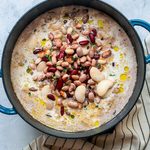The future of nutrition in fast food restaurants
Many fast food restaurants are beginning to include healthier menu options. But much more could, and should, be done

Source: Best Health Magazine, March/April 2012; Photo by My Yen Trung
In the restaurant business, they call it the ‘veto vote,’ a scenario that strikes fear into the heart of food service executives: A family or a group of friends decides to go out for a meal, and they embark on the pleasant business of choosing where to go: Do they want something fast or a place with a bit of atmosphere’ethnic cuisine, bistro style, roadhouse’?
Most Canadian cities are blessed with an abundance of choices, so the decision will involve familiar factors, such as location, price, parking, a kids’ menu. But there’s also a potential deal breaker: One person wants meat but another wants seafood, or vegetarian fare. If a restaurant can’t cater to all, it will lose the whole party.
‘We like to eliminate the ‘veto vote,”’ says Cathy Tostenson, vice-president of marketing and menu development at White Spot, ‘a 64-location restaurant in Western Canada.
Increasingly, the potential veto vote is coming from a customer who wants to eat something healthy (low in fat, calories and sodium), nutritious (veggies, whole grains, high protein) and flavourful. And, as Tostenson well knows, some of those customers are parents who want something for the ‘kids other than pizza or chicken fingers.
New options at restaurants
Traditionally, many restaurant chains have offered a desultory vegetarian dish’say, a veggie burger or pasta with vegetables ‘but made little effort to provide other healthy options. In recent years, things have been changing. At White Spot, for example, surveys and focus groups with its ‘guests,’ as well as website feedback, have shown that customers want a broader range of better-for-you options. Tostenson says she gets the same signals from industry publications, such as Nation’s Restaurant News. ‘Leading the menu development team, I spend a lot of time researching food trends.’
So in April 2011, the company began using only omega-3 eggs, and added multi-grain buns for its burgers’something customers asked for ‘time and time again,’ Tostenson says. There are also low-cal, low-fat breakfast options’a mushroom, spinach and cheese frittata, and oatmeal with fruit. For lunch and dinner, the chain has introduced low-sodium entrées such as a chargrilled chicken burger and a chicken curry. For kids, there’s a Health Check’approved ‘lifestyle cheese pizza’ made with a thin crust served with steamed veggies and a side of grapes. As Tostenson says, they’ve set out to prove healthy options can hold their own on a menu packed with traditional fare.
The effects of a poor fiet
As it turns out, White Spot isn’t alone: Other restaurant and fast-food chains, including giants Tim Hortons, Pizza Pizza and McDonald’s, are starting to rethink parts of their menus to include healthier meals. That’s the good news. But the bad news, of course, is that Canadians, like others in developed nations, are living with the consequences of a poor diet and sedentary lifestyles. Children are often the primary victims. Increasingly, kids are driven to school, eat fast food or junk food on the fly, and spend far more time in front of screens than playing. With childhood obesity rates soaring, there’s a real chance the next generation may experience an unprecedented decline in longevity due to chronic health conditions related to poor diet and inactivity. Diabetes, for example, now affects more than nine percent of Canadians, and drains almost $12 billion a year from healthcare budgets.
Thankfully, Canadians are waking up to the implications of these health trends. An Environics poll conducted in 2011 for the Canadian Diabetes Association found that, when asked to explain the rising rates of this illness, 84 percent pointed to the failure of people to take care of their health, and 81 percent blamed the food industry.
Not coincidentally, eating trends have begun to shift perceptibly. ‘Gone are the days when a burger and fries were your only choices,’ says Donna Finelli, Tim Hortons’ director of brand marketing. She notes that customer surveys in the past three years indicate people want ‘options that help them eat well on the go,’ such as the chain’s new egg-white breakfast sandwich on a whole-grain English muffin. (In fact, sales of Tim’s baked goods are flat.) Other restaurant executives agree. Peter Druxerman, vice-president of marketing at Druxy’s, an Ontario-based deli chain, points out that in the 1980s, his flagship outlet in a downtown Toronto office building would sell more than 200 pastries daily; now it’s a couple of dozen.
Thanks in part to pressure from popular films like Super Size Me, which slammed McDonald’s, and the high-profile advocacy of celebrity chefs such as Jamie Oliver, the restaurant sector reacted a few years ago to concern from health experts by significantly reducing trans fats in fried foods and baked goods. These days, a growing number of firms are looking at their use of salt. A 2009 Health Canada survey found that for many food processors and retailers, sodium reduction is a ‘medium to high priority,’ and some were shifting to sea salt or increasing the use of other seasonings to compensate. But these attitude shifts aren’t yet universal, and the survey found that some firms have balked at cutting salt for fear of ‘offending consumer taste expectations.’
‘We’ve made healthy living an imperative for our association,’ says Garth Whyte, president of the Canadian Restaurant and Foodservices Association (CRFA). ‘More and more of our members are moving in the direction of making healthier menus because they have to. It’s a customer demand.’ In 2009, the influential lobby group laid out a ‘healthy living’ strategy for its members. The CRFA has also been working with the federal government to find ways to improve the food supply.
But our restaurant industry hasn’t gone as far as its U.S. counterpart to promote more nutritious offerings to children. Last summer, for example, its National Restaurant Association launched Kids LiveWell (KLW). This heavily promoted program, with more than 15,000 restaurant outlets signed on’among them chains like Burger King’requires participants to offer at least one kids’ meal that has 600 calories or less; contains two or more servings of fruit, vegetables, whole grains or lean proteins; and limits salt and fat.
Whyte concedes that despite KLW having been a ‘huge success,’ the CRFA hasn’t made a similar move. ‘We’re focused on working with federal and provincial governments on a made-in-Canada approach to providing restaurant-goers with nutrition information.’
McDonald’s isn’t participating in the U.S. KLW venture, but its American division last year announced plans to cut french fry portions in Happy Meals by more than half, and to add apple slices. Anne Parks, director of menu development for McDonald’s Canada, says the company has cut salt in several of its menu offerings. This spring, the Canadian operation is adding Danone mini-yogurts to its Happy Meals and introducing a mini-fries portion similar to its U.S. counterpart. It’s also exploring the possibility of providing a vegetable option, such as baby carrots. But, she points out, the fast-food giant is approaching this shift cautiously. ‘It’s about incremental change, not huge leaps.’
Some experts are dubious about the impact of such programs. A 2010 U.S.-based study conducted by Yale University’s Rudd Center for Food Policy & Obesity found that of the 3,039 meal combinations offered by the 12 largest fast-food chains, only 15 satisfied accepted nutrition criteria for preschoolers and older children.
The study went on to implicate the persuasive powers of fast-food advertising. ‘Even though McDonald’s and Burger King show only healthy sides and beverages in child-targeted advertising [in the U.S.], the restaurants automatically serve french fries with kids’ meals at least 86 percent of the time, and soft drinks at least 55 percent of the time,’ the authors noted. ‘Forty percent of children ages two to 11 ask their parents to go to McDonald’s at least once a week, and 15 percent of preschoolers ask to go every day. Eighty-four percent of parents report taking their child ages two to 11 to a fast-food restaurant at least once in the past week.’
Other observers agree. ‘The fast-food chains are putting on a good show, but they are still shovelling junk into kids,’ says Bill Jeffery, Canadian coordinator for the Centre for Science in the Public Interest, which has studied children’s meal options in the food service sector and in 2010 sued McDonald’s in the U.S. over its use of toys to entice children. ‘It’s not enough [for the chains] to say they’ve presented parents with choices. Parents will always be the last line of defence, but they shouldn’t be the only line of defence.’
The Health Check label
Samara Foisy, a registered dietitian at the Heart and Stroke Foundation of Canada (HSF) knows all about the problems with kids’ fast-food meals. The choices, she points out, are generally not very healthy. But she’s working hard to cajole Canadian food service chains to add more nutritious choices.
It’s important work. Canadians, Foisy points out, eat out frequently: Fully a quarter of all household food dollars are spent in restaurants. While nutrition experts say the best way to limit portion sizes and control ingredients is to eat at home, they are increasingly turning their attention to the choices people have when they’re eating out.
These days, Foisy is a program manager with Health Check, a popular national program that’s meant to improve the nutritional balance in retail and restaurant foods. Participating companies provide a fee to HSF and agree to comply with the program, and in return can promote the Health Check label on their products or menu items.
The program, now in its 13th year, began with grocery products, but has expanded to include the food service sector. ‘We’re seeing more participation,’ Foisy says. According to HSF’s latest data, 17 food service firms are participating, including White Spot, chains such as Swiss Chalet and Boston Pizza, and international brands like Pizza Hut. The program now reaches into more than 2,000 outlets across the country, with well over half in Ontario. Atlantic Canada, Manitoba and Saskatchewan have the fewest participants. The retention rate, she claims, is ‘very high.’
Which is the telling detail, because the HSF imposes increasingly stringent criteria, requiring participants to limit fat, sodium and caloric content while offering multiple food groups. For children’s Health Check entrées, the meal must have at least 55 grams of fruit or vegetables (not including potatoes), more than 10 grams of protein and less than 720 milligrams of sodium; there are also strict limits on fats other than fish oils. Foisy says her team encourages participants to include at least one Health Check kid’s entrée on their menus.
When Foisy reviews the program’s accomplishments, she cites examples such as Extreme Pita, a Mississauga, Ont.-based chain with 250 outlets across Canada. ‘They removed a ton of sodium to meet our criteria.’
For founder Alex Rechichi, CEO of parent firm Extreme Brandz, the decision to sign on with Health Check wasn’t hard. The company, now in its 15th year, traces its roots to a handful of pita joints looking to tap into a growing demand for more nutritious fare among athletes at university campuses. ‘We took advantage of the shift,’ says Rechichi, who notes his chain has expanded into hospitals, airports, food courts and highway rest stops. This year it became the first national chain to put nutrition information right on its menus’most chains make the data available on their websites or provide it to customers upon request’and it is looking to make in-roads in the school lunch market.
Retooling a menu can be complicated and involve negotiations with suppliers. In the case of Extreme Pita, Rechichi’s team decided to focus on sodium. Its chefs had to work with giant food processing firms like Maple Leaf Foods and E.D. Smith to develop ingredients with lower salt levels, such as chicken, sauces and dressings. To boost protein, they added salads with chickpeas and beans, as well as hummus-based items.
Other chains that have embraced the Health Check designation include Druxy’s. The deli chain geared to the lunchtime office crowd has in the past three years been promoting a broad range of new salads and assorted vegetable toppings for its sandwiches, as well as sodium- and fat-reduced soups that are Health Check certified.
Druxy’s marketing VP Peter Druxerman explains that shifting customer preferences have presented a wake-up call, particularly in light of the enormous reach of Subway, whose brand focuses on low-fat sandwiches. What was more, he adds, even though Druxy’s uses high-quality deli meats, ‘people say, ‘How can a deli be healthy?”’
But there was another motivation: Four years ago, Druxerman had a health scare that caused him to shed pounds and alter his diet, adding salads and subtracting prepared meats. Meanwhile, the company was looking for ways to reposition itself when Druxerman had a chance encounter with an HSF official. The University Health Network, a consortium of Toronto’s four major teaching hospitals, had summoned food service companies with outlets in their buildings to discuss introducing fare that complied with the Health Check program. Druxerman leapt at the chance to sign on.
The company now offers five Health Check’certified sandwiches at all its outlets and, taking a page from Subway, allows customers to choose an assortment of toppings. And the menu, Druxerman adds, has been adapted so customers can see the nutritional impact of different combinations of toppings. ‘Customers love the options,’ he says.
In some chains, participating in the program has also led to changes to other parts of the menu that aren’t branded with the Health Check logo. Since signing on five years ago, Boston Pizza has reduced sodium in 75 percent of its menu selections, including pizza sauces, chicken wings, rice dishes and salad dressings. ‘We don’t talk about it a lot,’ says executive chef Michael Gray. ‘It’s a holistic, integrated approach to the menu.’
The question with these forays is how often Health Check items are chosen, and whether they’re improving Canadians’ diets. Regardless, both Druxerman and Extreme Pita’s Rechichi are seeing a positive customer response. Rechichi says Extreme’s ‘brand relevance’ score, relative to other chains, has jumped 18 percent since Health Check products were introduced. ‘We haven’t seen that kind of jump before.’ (The score also rose because of the chain’s expansion.)
Pizza Pizza, a large chain (and Health Check participant), has had mounting demand for its healthier options, especially whole-wheat crusts, which now account for almost 10 to 15 percent of sales. As chief marketing officer Pat Finelli says, ‘You follow consumer trends or what the media are saying.’ Some other chains that have signed on to the program, including Swiss Chalet and Pizza Hut, declined to be interviewed for this article. It’s worth noting that according to a 2009 Health Canada survey: ‘Interest in the Health Check labelling system had driven many companies’ efforts to reduce sodium in their products, as had the need to offer consumers ‘sodium-reduced’ alternatives to mainline products’however, no one cited these initiatives as having produced significant business gains (and in some cases, they necessitated flavour/taste compromises that resulted in product failure).’
The presence of healthy restaurant options is only one fix for what ails the way Canadians eat and exercise. And in many ways, the problems that have led to bulging bellies and high blood pressure involve a very wide range of social and cultural factors. But as the federal government proceeds with its new campaign to shear a third of our average daily salt consumption, it’ll be interesting to see if large chains succeed in projecting the nutrition standards for their designated healthy fare onto the rest of their menu.
Donna Finelli, at Tim Hortons, notes that the company, Canada’s largest food service chain, is drawing attention to the ingredient changes in a new generation of products, like whole-grain muffins or a sodium-reduced version of its popular chicken soup. But the chain isn’t necessarily trying to designate such dishes as healthy. She cites another recently launched product: a lasagna dish that has 10 grams of fat and 670 milligrams of sodium. ‘First and foremost, it has to taste great,’ she says. ‘But we developed it with the nutritionals in mind.’
Want to petition the government to require mandatory nutrition labelling on restaurant menus? Go to besthealthmag.ca/petition.




